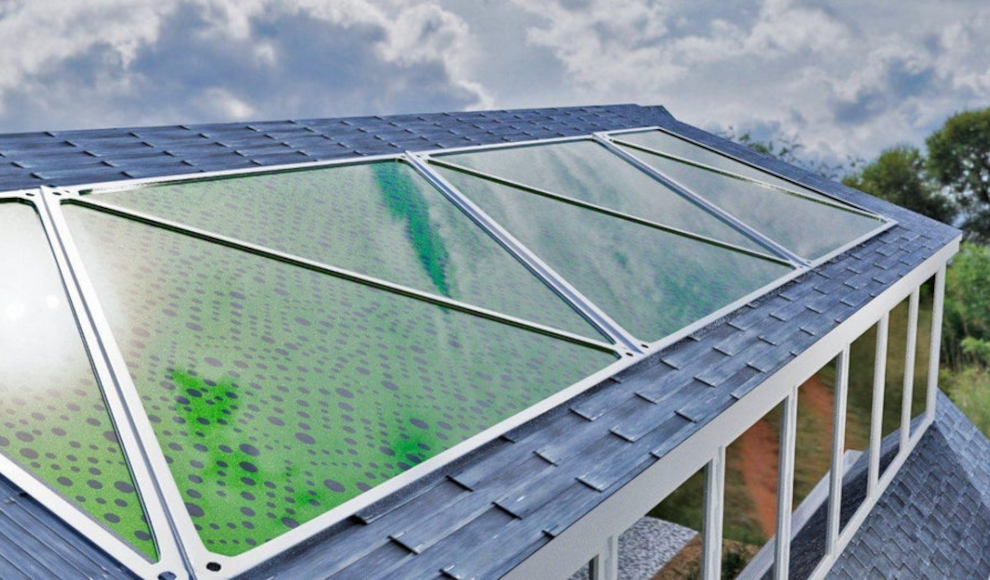Mexican start-up Greenfluidics has developed an algae panel for buildings that can produce oxygen, electricity, and biomass. Algae can remove significantly more CO2 from the atmosphere than most crops and grow much faster than other plants, requiring only CO2, sunlight, water, and inorganic nutrients. Brilliant Planet, another start-up, plans to reduce the concentration of CO2 in the Earth’s atmosphere and combat climate change by using giant algae farms in the desert. The CO2 conversion of these algae farms is about 30 times more effective than the rainforest, according to the company. In 2013, Arup and Splitterwerk Architects demonstrated that flat algae tanks can also be integrated into buildings. The algae living in the panels use sunlight and CO2 for photosynthesis and help keep the building cool by not allowing direct sunlight to reach its surface. In addition, the biomass produced by the algae can be used to operate the hot water system.
Greenfluidics has now introduced a new generation of innovative algae panels that produce not only oxygen and biomass but also electricity. The company has added a nanofluid to the water, which increases its thermal conductivity. With the help of a thermoelectric generator, the warm water can directly produce electricity. The BIQ building, built in Hamburg in 2013, is still a unique example of this technology. However, the high costs of construction, which were ten times higher than normal, have prevented the widespread use of algae panels. It is unclear whether the algae panels presented by Greenfluidics will ever be used on an industrial scale. Furthermore, Greenfluidics seems to have calculated the electricity generation of the algae panels very optimistically. The start-up’s website assumes that a bio-panel can produce 328 kilowatt-hours per square meter annually. However, under good conditions, photovoltaics can only generate a maximum of 200 kilowatt-hours of electricity per square meter. Depending on the shading of the building, 90 kilowatt-hours of electricity per square meter can also be saved, which would normally be used for air conditioning.
In conclusion, Greenfluidics has developed a new generation of algae panels that can produce oxygen, biomass, and electricity. The use of algae panels in buildings can help reduce the concentration of CO2 in the atmosphere and combat climate change. However, the high costs of construction and the optimistic calculation of electricity generation may prevent the widespread use of this technology.










